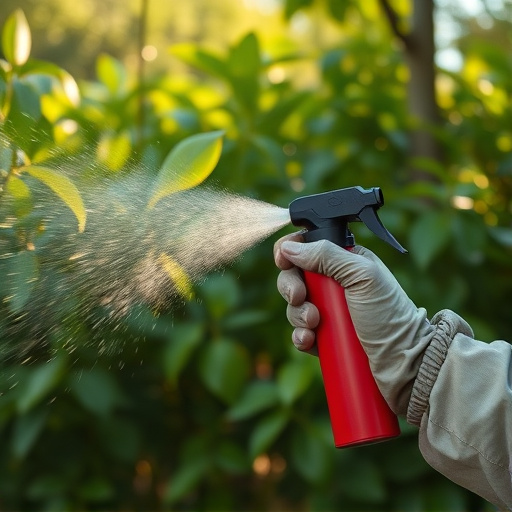Pepper spray is a powerful yet natural self-defense tool against dogs, irritating their eyes and respiratory system to temporarily disorient them. Choosing the right pepper spray for dog attacks involves considering concentration, burst pattern, range, ease of use, and weather resistance. Use it as a last resort, aiming at sensitive areas like eyes and nose from 2–3 feet away to deter the dog, staying calm and assessing the situation first. Store securely, understand local laws, and be aware that while effective, pepper spray may not stop all determined attacks.
“Uncover the power of pepper spray as a vital self-defense tool, especially against dogs. This comprehensive guide explores the basics, benefits, and various types available in the market. Learn how to choose the right one for your needs, ensuring its effectiveness during encounters with aggressive canines.
We’ll delve into practical use techniques, safety precautions, and legal aspects, empowering you with knowledge to handle potentially dangerous situations. Discover the importance of understanding pepper spray as a game-changer in personal safety, especially when facing off against dogs.”
- Understanding Pepper Spray: Basics and Benefits
- Choosing the Right Pepper Spray for Self Defense
- Effective Use Techniques Against Dogs
- Safety Precautions and Legal Considerations
Understanding Pepper Spray: Basics and Benefits
Pepper spray is a non-lethal self-defense weapon that has gained popularity for its effectiveness in neutralizing attackers, especially in dog encounters. At its core, pepper spray works by irritating the eyes and respiratory system of the target, temporarily disorienting them and providing the user with an escape or time to call for help. The active ingredient, capsaicin, is derived from chili peppers, making it a natural yet powerful agent.
One of the key benefits of using pepper spray as a self-defense tool against dogs is its non-deadly nature. It can effectively stop an aggressive dog without causing permanent harm, which is crucial in situations where bystanders or pets are present. Unlike firearms, pepper spray doesn’t pose the risk of accidental discharge, making it more accessible and safer for individuals who may not have extensive training. Its ease of use and swift action make it a valuable addition to personal safety strategies, especially when facing an unexpected attack from dogs.
Choosing the Right Pepper Spray for Self Defense
When considering pepper spray as a self-defense weapon, selecting the right one is paramount for effectiveness and safety. One specific area to focus on is its defense against dogs, which can be particularly useful in unexpected encounters. Look for pepper sprays designed with this purpose in mind; these often have higher concentrations of capsaicin, the active ingredient responsible for the burning sensation. Additionally, consider factors like range, ease of use, and weather resistance. A spray with a longer reach ensures you keep distance from potential threats, while weather-resistant models are ideal for outdoor activities or unpredictable climates.
For self-defense against dogs, it’s beneficial to choose pepper sprays with a stream or burst pattern that can be aimed directly at the face and eyes. This delivery method is more effective in disorienting an aggressive dog than a fog or spray pattern, which might not reach the target area as precisely. Always check local laws regarding self-defense weapons, including pepper spray, to ensure legal compliance.
Effective Use Techniques Against Dogs
When facing an attack from a dog, using pepper spray can be an effective self-defense strategy. The key to its success lies in proper application techniques. Aim for the eyes and nose—these areas are sensitive and will cause the dog to temporarily blink and squint, disorienting it enough to allow you to escape. Hold the canister at a safe distance, about 2–3 feet away, and spray in short bursts to avoid overwhelming yourself with the irritant.
Remember, pepper spray is most effective when used as a last resort. Stay calm and assess the situation first. If possible, make loud noises or use objects around you as distractions. Only turn to pepper spray if the dog continues its aggressive behavior, ensuring your safety becomes paramount.
Safety Precautions and Legal Considerations
Using pepper spray as a self-defense weapon against dogs requires a clear understanding of safety precautions and legal considerations. Always store pepper spray out of reach of children and pets, in a secure, locked location, to prevent accidental discharge or misuse. Ensure you are familiar with local laws regarding the possession and use of pepper spray, as regulations vary widely from region to region.
When using pepper spray against an aggressive dog, aim for the eyes and face, as these areas are highly sensitive. Be prepared to move quickly and maintain a safe distance, as pepper spray can temporarily impair vision and breathing, but it does not always stop a determined attacker. Remember that self-defense laws may differ when using pepper spray against animals compared to human assailants, so consult legal experts for guidance specific to your area.
Pepper spray can be a powerful tool for self-defense against dogs, but it’s crucial to understand its safety aspects and legal boundaries. By choosing the right pepper spray and learning effective use techniques, individuals can protect themselves and their pets responsibly. Always prioritize safety precautions to prevent accidental harm and ensure you’re aware of local laws regarding self-defense weapons like pepper spray.
